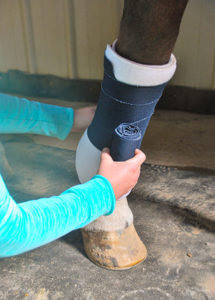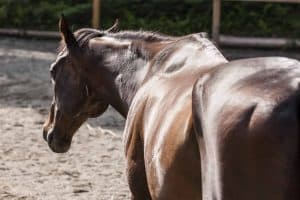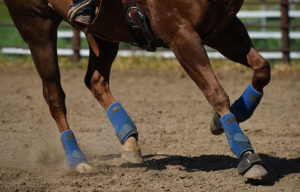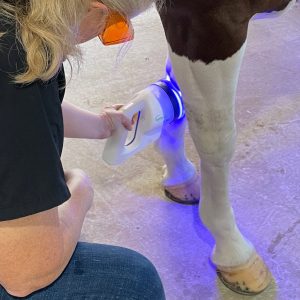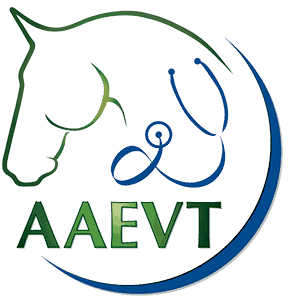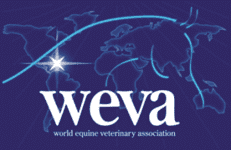Horse Farm Landscaping: Avoid These Poisonous Flowers and Shrubs
Make sure you’re not inadvertently planting poisonous flowers and shrubs around your barn this spring.

Do you have landscaping around your barn? If so, you know it can be easy to get carried away with these spaces, whether they’re a collection of potted flowers near the outdoor arena or more permanent green flowering shrubs edging the barn. But what if one simple nibble of your beautiful ornamental plants could prove deadly to your horse?
Often horse owners seek out plants that combine aesthetics with hardiness. And even though they’re placed well out of reach of curious muzzles, flowers and plants arranged around the stable can still pose threats to horses. Strong winds, storms, and flooding, for instance, can carry branches, leaves, and other plant materials into pastures or hayfields. Plus, as we all know too well, the escape artists around the barn might end up grazing in areas normally off limits. Then there’s the horse that randomly grabs at any or all leafy green material while being led out to his field or the arena.
Many plants can be toxic to horses, and this list represents a small sampling of popular and, unfortunately, toxic, decorative flora. Let’s look at which ones you should avoid when sprucing up your barn.
Ornamental Plants and Vines

Oleander (Nerium oleander)
It’s easy to understand oleander’s appeal: This evergreen shrub features beautiful white, yellow, peach, salmon, pink, or red blooms and thick, smooth leathery leaves. Native to the Mediterranean, oleanders thrive best in warm climates such as California and the Southern United States and are resistant to drought conditions.
All parts of the plant—especially the leaves and flowers—harbor glycosides, which can affect a number of bodily processes but primarily heart function. As little as 20 to 30 grams of leaves (about five to 10 medium-sized leaves), either dried or green, can be toxic for the average-sized horse. Oleander can also poison humans, dogs, and cats.
According to the California Animal Health and Food Safety Laboratory System, oleander is one of the most common causes of plant poisonings diagnosed in animals, particularly horses, cattle, and sheep. Although horses don’t necessarily find it palatable, they might consume the leaves unintentionally with hay or in paddocks lacking enough forage to keep them busy.

Morning glory (Ipomoea spp)
The morning glory is an annual climbing shrub or vine best known for its trumpet-shaped flowers and heart-shaped leaves. People find this plant appealing because its flower color variations, including purple, blue, magenta, and white, attract butterflies and hummingbirds. It thrives in sunny, warm climates.
Morning glory flower seeds contain lysergic alkaloids (LSD is one example) that can cause incoordination, diarrhea, lethargy, and liver failure. Dogs and cats are also susceptible to morning glory poisoning.

Branching ivy (Hedera spp)
This evergreen climbing or ground-creeping vine features lobed leaves, small green or yellow flowers, and black fruit. Its leaves are more toxic than its berries or flowers. It typically grows in shady areas throughout the United States.
Consuming the toxin known as triterpenoid saponin, which is found in live or dried branching ivy leaves, can cause diarrhea, hypersalivation, and abdominal pain in horses. Touching the plant’s sap can cause skin irritation. Branching ivy can also be toxic to dogs and cats.
Other species to keep out of your flower beds include ornamental tobacco and comfrey.
Shrubs and Trees

Yew (Taxus spp), Japanese and English
Common evergreen shrubs or bushes with bright scarlet red fruit and needlelike leaves, yews are versatile plants that grow in both sun and shade.
Yew bark, leaves, and berry seeds contain toxic alkaloids that serve as the plant’s self-defense mechanism against animal consumption (with deer being the exception to this rule). Ingesting as little as 10 to 15 ounces can kill an average-sized horse within 30 minutes. Because birds are attracted to yew berries and the hard seed coat within can withstand the bird’s digestive system, seeds can be easily dispersed anywhere. The concentration of toxic alkaloids in yews tends to be highest in winter.

Atamasco, rain, and zephyr lilies (Zephyranthes)
These delicate star-shaped white flowers fade to pink and are native to the southern portion of North America. The compound phenanthridine found primarily in their bulbs is toxic to horses, causing clinical signs such as dehydration, electrolyte imbalance, seizures, cardiac function changes, and possible dermatitis (skin inflammation) in dark-colored horses. Additional animals affected? Cats.

Foxglove (Digitalis spp)
The foxglove is most notable for its slender purple, pink, red, or white trumpetlike flowers. It grows best in regions with acidic soil. When horses consume as little as 0.01% of their body weight of the plant, the cardiac glycoside toxins within can cause colic or other pain, irregular heartbeat, and frequent urination prior to death. Foxglove is also toxic to cats and dogs.
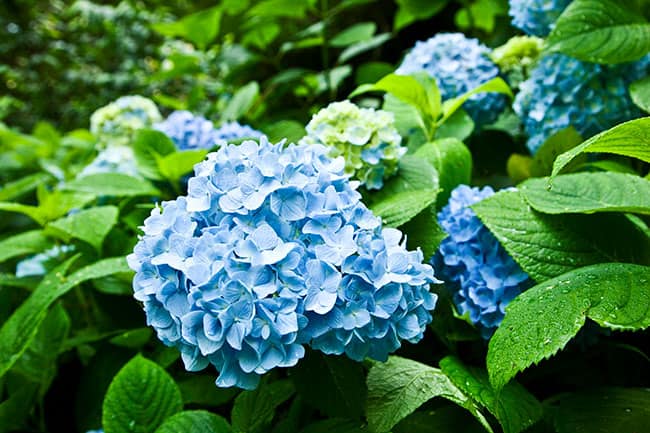
Hydrangea (Hydrangeaceae spp)
This woody shrub typically 3 to 5 feet tall features huge bouquets of clustered white, pink, or blue flowers and long, broad oval leaves. It grows best in the Southern and Eastern U.S. Cyanide poisoning when horses consume large quantities of the hydrangea’s leaves, buds, or flowers can cause colic, bloody diarrhea, labored breathing, weakness, coma, and death. It also affects dogs and cats.

Rhododendron and Azalea (Rhododendron spp)
These evergreen shrubs that grow well in the Middle Atlantic and Eastern U.S. have clusters of red, pink, lavender, yellow, or white flowers and smooth narrow leaves. Glycosides present in the plants affect the horse’s cardiac system, resulting in salivation, diarrhea, colic, abnormal heart rate, convulsions, coma, and eventually death. They also affect dogs and cats.

Cherry (Prunus spp)
The cherry is a medium-sized tree with leathery, shiny green leaves, white or pink flowers in the spring, and black fruit. Prussic acid, a hydrogen cyanide toxin, is present in the tree’s leaves and fruit, which tend to be most toxic after a drought or frost. When consumed, wilted leaves, bark, and twigs cause difficulty breathing, staggering, convulsions, collapse, and eventually death. Even if you don’t have cherry trees in your pastures, strong winds can carry branches and leaves into areas where horses graze. As little as 1 pound of wilted cherry leaves can be lethal for an 1,100-pound horse. Dogs and cats can also be affected.
Other shrubs and trees to avoid include holly, mountain laurel, lambkill, fetterbush, castor oil plant, angel’s trumpet, red maple, and box elder, among others.
Oaks: Not So Gentle Giants
Large deciduous oak trees have lobed leaves, produce acorns, and their ample branches can provide cool summer shade. However, they also produce toxic tannins, or tannic acids, which can be found in all parts of the tree’s vegetation, including flowers, leaves, and acorns. Young oak buds emerging in the spring contain the highest concentrations of the toxin. The tannins help protect the tree from fungi and insects. Poisoning occurs when horses consume buds, leaves, and acorns for two to three days or longer. According to the Western Animal and Environmental Anti-Poison Center, in Nantes, France, approximately 6.6 pounds of acorns is sufficient to poison a 1,100-pound horse. This report surfaced after 10 horses in Northwest France died after consuming unripe acorns (TheHorse.com/32833). Even if you don’t have oaks on your property, remember that strong winds or storms can blow acorns and branches into pastures and pose a threat to horses.
In 2014 Bettina Dunkel, DVM, PhD, Dipl. ACVIM, ECEIM, ACVECC, FHEA, MRCVS, senior lecturer in equine medicine at the U.K.’s Royal Veterinary College, led a group of veterinarians in reviewing case studies from two referral hospitals that had treated horses with suspected acorn toxicity. Their findings revealed that acorn ingestion can cause severe inflammation of the large intestine and, as a result, bloody diarrhea and colic. In addition, kidney damage can occur and progress to renal failure. Unfortunately, it’s common for horses that do develop the disease to die, and those affected only very mildly can survive.
“Only a small proportion of horses that eat acorns develop the disease, but currently we don’t know what predisposes some horses to the disease while others are not affected,” says Dunkel. “In certain years there are more cases than in other years; again we don’t know why this happens. We currently, therefore, recommend limiting exposure to acorns in the autumn.”
—Kristen Janicki, MS
Planting Apropos
Bryan Stegelmeier, DVM, PhD, Dipl. ACVP, veterinary pathologist at the USDA’s Poisonous Plant Research Laboratory, in Logan, Utah, makes one thing perfectly clear: “We are not in the business of making lists of ‘safe plants.’ Nearly all plants have some toxic or antinutritional toxic components that can cause health concerns when consumed unintentionally.”
For example, he says, alfalfa, a widely used forage, poisons livestock, including horses, every year. It and many other grass and pasture weeds can accumulate poisonous nitrates during times of stress (e.g., drought or frost), resulting in gastrointestinal distress, difficulty breathing, ataxia (incoordination), and even death if consumed in large quantities. Frost damage to certain legumes and grasses can also lead to higher sugar content, specifically fructans, increasing horses’ risk of developing laminitis and colic.
“It seems every year the USDA receives a report of poisoning associated with a plant that was previously not considered to be toxic,” says Stegelmeier. Therefore, he strongly suggests contacting your local extension agent for recommendations as to best landscaping options in your specific location. These experts can advise on plants that grow best in your individual climate and soil conditions, keeping in mind that you should still make every effort to ensure horses don’t consume them.
Removing the Risks
The key to toxic plant removal and control is complete elimination of all plant material above and below ground. “There are some anecdotal reports that suggest toxic plant parts can persist in pastures and grounds after clearing and grubbing (digging out) plants,” says Stegelmeier. “Examples that come to mind in horses include the oleander.”
Unfortunately, he adds, we have no evidence indicating which procedures might be most effective at removing all toxic plant parts. But generally, use gloves when removing toxic plants, and pull flowering plants prior to seeding to help reduce the risk of spreading plant seeds. After cutting down plants, use herbicide as directed to prevent regrowth.
You might or might not consider your neighbors a threat to your peace of mind but, unbeknownst to you, they might serve as sources of toxic plant material, potentially feeding or throwing garden trimmings over the fence to your horses. Discuss the risks of toxic plant consumption with nearby neighbors, so they do not unintentionally poison your horses.
In most cases horses avoid eating toxic plants when more palatable forage is available. But with inadequate hay or pasture due to overgrazing or drought, horses might seek out other available plants.
Summing it Up
Lovely landscaping designs with flowering shrubs might be appealing to the eye but present potential dangers to barn-dwelling inhabitants, from horses to pets. Plants such as oleander can prove deadly even when consumed in very small amounts. It’s important to recognize these plants and eradicate them completely. Rely on local horticulture and equine experts to help identify, remove, and replace dangerous plants around the farm.
Written by:
Kristen M. Janicki, MS, PAS
Related Articles
Stay on top of the most recent Horse Health news with
